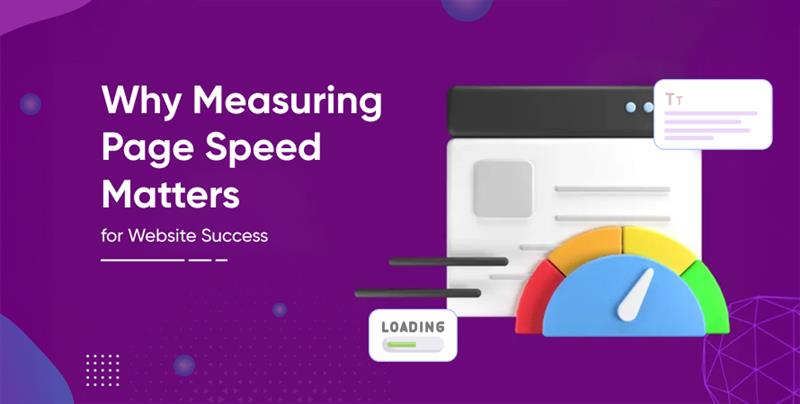Why Measuring Page Speed Matters for Website Success



Website performance isn’t just about sleek design or great content anymore—site speed plays a massive role in how users engage, how search engines rank you, and whether your clients see meaningful results. Yet, many agencies overlook one critical piece: regularly measuring page speed.
At Hire Core Web Vitals Consultant, we specialize in helping agencies like yours deliver real value to their clients through technical performance optimization. In this blog, we’ll break down why measuring website speed matters, how to do it, and what kind of business impact it can make. We’ll also highlight some tools and data-driven reasons why this step should never be skipped.
The Silent Killer of Your Website’s Performance
You might have crafted a stunning website for your client, integrated all the right tools, and published conversion-driven content. But if the site is slow to load, none of that matters. Users today expect web pages to load in under three seconds—and even that’s generous. Anything slower can lead to high bounce rates, poor engagement, and lost revenue.
Google site speed is now a ranking factor, and if you’re not keeping track of how your site performs, you’re giving competitors an edge. Imagine sending organic traffic to a site that takes forever to load. Visitors won’t wait—they’ll bounce. This ultimately impacts SEO, user experience, and even ad performance.
That’s why measuring performance with tools like a page speed test or a website page speed test should be an essential part of your website maintenance process.
What Is Page Speed and How Is It Measured?
Page speed refers to how quickly content on your page loads and becomes usable. It’s not just about when the page first appears—it’s about how fast users can actually interact with it. When evaluating performance, tools don’t just measure load time—they measure several core metrics that influence the real user experience.
Key Performance Metrics to Track:
- LCP (Largest Contentful Paint) – How long it takes for the main content to load.
- FID (First Input Delay) – The delay between user interaction and response.
- CLS (Cumulative Layout Shift) – How much the page shifts as it loads.
Recommended Tools for Measurement:
- Google PageSpeed Insights – Provides actionable suggestions to improve web speed.
- GT Metrix – Gives both visual and technical insights into performance bottlenecks.
- WebPageTest – Advanced testing with waterfall charts and performance grades.
- Lighthouse – Google’s open-source tool to audit performance and accessibility.
If you need a quick web page speed test or want to check speed of website assets, combining these tools gives you a well-rounded picture. Most importantly, always run multiple tests—speed can fluctuate based on server load, location, and even time of day.
Why Measuring Page Speed is Crucial (Backed by Data)
You can’t fix what you don’t measure. Agencies working with client websites must treat site speed measurement as an ongoing practice—not a one-time launch checklist.
Here’s why it matters:
- Google site speed is part of its ranking algorithm. Sites that load faster are favored, especially on mobile.
- According to Google, a 1-second delay in load time can reduce conversions by up to 20%.
- Amazon found that every 100ms of latency cost them 1% in sales.
- Users form opinions in milliseconds. A delay creates distrust, poor UX, and lower retention.
Fast websites are more likely to keep users engaged and encourage conversions. If you want to build trust and drive performance, you need to check page speed frequently.
Slow-loading sites can also be vulnerable to security risks that further degrade performance. If you haven’t already, we strongly recommend reading our blog on Malvertising and how to avoid it to understand how bad ads can slow down or compromise your client’s site.
Page Speed & EEAT: How They Work Together
If you’re an agency aiming to build long-term digital credibility for your clients, aligning with Google’s EEAT (Experience, Expertise, Authoritativeness, and Trustworthiness) standards is non-negotiable. While content quality and backlinks are crucial, few realize how deeply website performance ties into these principles.
A sluggish website undermines user experience—the first “E” in EEAT. Users are far less likely to trust or engage with a brand when their first impression is a slow, glitchy site. Delays during checkout or even while scrolling content can harm user trust, no matter how polished your SEO content might be.
Furthermore, page load speed directly affects mobile users, who now make up the majority of web traffic. If users bounce before they even see the page, all your hard work—from content to CRO—loses its impact.
That’s why we, at Hire Core Web Vitals Consultant, help agencies implement performance-first strategies that uphold not only SEO standards but also user trust and digital reputation.
How to Continuously Monitor Your Site Speed
Monitoring site speed should never be a one-time task. We recommend agencies establish ongoing performance monitoring systems to catch and fix issues before they escalate.
Here’s how:
- Use automation tools: Platforms like Google PageSpeed Insights, Lighthouse, and GT Metrix let you schedule and automate regular reports.
- Set performance baselines: Define target benchmarks for site load speed so you can track degradation over time.
- Monitor after every site change: Updates to themes, plugins, or third-party scripts can unexpectedly affect speed.
- Use Google test for speed site tools to verify performance post-deployment.
It’s also wise to use a Google site speed checker at least once a month, especially after updates or new campaigns. Agencies should consider integrating performance audits into their regular client reporting cycles. That way, you’re not just offering SEO—you’re offering a full-spectrum performance strategy.
You can learn more about our ongoing monitoring approach in our Core Web Vitals Service page, built specifically for white-label partners and performance-driven teams.
Common Mistakes That Hurt Page Speed (and How to Avoid Them)
No matter how advanced your design or marketing strategy is, simple mistakes can tank your client’s site speed. Here are the most common issues we encounter when we audit agency-built sites:
Common Speed-Killers:
- Unoptimized images: Large, uncompressed images are the top cause of slow load times.
- Render-blocking JavaScript: Scripts that load before content prevent users from seeing anything quickly.
- Inefficient hosting: Cheap hosting services can’t handle high traffic or resource-heavy sites.
- Lack of browser caching: Without caching, resources are reloaded every time, increasing page load speed.
- Too many third-party tools: Every extra plugin or script adds weight to the page.
When you’re unsure where things are going wrong, run a test page speed check using tools like WebPageTest or Google PageSpeed Insights. They offer actionable recommendations tailored to your actual performance data.
Need help pinpointing the real culprits on your site? That’s where we step in. As a white-label partner, Hire Core Web Vitals Consultant provides detailed audits and optimization plans your agency can confidently offer to clients under your own brand.
Bonus: Actionable Tips to Improve Your Page Speed
Improving web speed doesn’t always require a full rebuild. Often, small changes can lead to significant performance gains. Here are tried-and-true techniques we recommend to our agency partners:
Performance Quick Wins:
- Enable lazy loading to delay loading off-screen images.
- Minify CSS, JS, and HTML to reduce the amount of code browsers must read.
- Use a CDN (Content Delivery Network) to serve content from the closest server.
- Preload key resources to prioritize essential content loading.
- Optimize web fonts by limiting the number of font weights or hosting them locally.
- Defer non-critical JavaScript so important content loads first.
Even if your client’s site passes a check website performance tool today, ongoing changes in browser technology and Google algorithms can affect it tomorrow. Regularly check speed website benchmarks to stay ahead.
To go deeper into long-term SEO strategy, we also recommend reading our blog on why disavowing links matters for your website’s SEO success.
Conclusion
Whether you manage two client websites or two hundred, regularly measuring and improving google speed page performance isn’t optional—it’s essential. In today’s competitive digital landscape, even a one-second delay can be the difference between a lead and a loss.
If you want to check page speed, improve conversions, and secure top rankings, you must treat performance as an ongoing effort—not a single fix. Use tools like google site speed checker, set KPIs, and monitor after every update. It’s the kind of proactivity your clients will thank you for.
At Hire Core Web Vitals Consultant, we make that process seamless. We handle the technical side, allowing your agency to deliver elite results without extra overhead.
Frequently Asked Questions (FAQs)
A score above 90 on Google PageSpeed Insights is considered fast. However, also look at Core Web Vitals to get a true measure of user experience.
Monthly, at minimum. Also test after every major site update or traffic spike.
Yes. Google has confirmed that site speed influences rankings, especially for mobile users.
Yes, use Google PageSpeed Insights, Lighthouse, or the google test for speed site feature to audit for free.
Absolutely. A slow website increases bounce rates and can lower Quality Scores on platforms like Google Ads, costing you more per click.